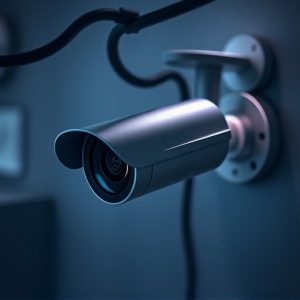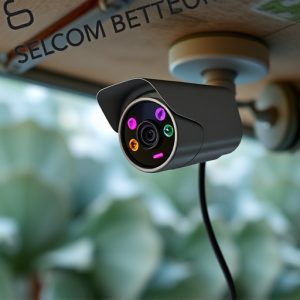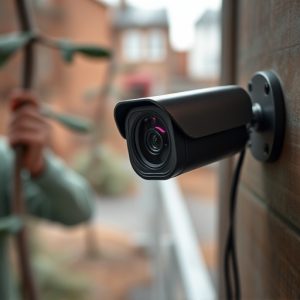Mastering Audio Surveillance: The Ins and Outs of Hidden Camera Technology
Recent advancements in technology have led to the development of highly sophisticated hidden camera…….
Recent advancements in technology have led to the development of highly sophisticated hidden cameras with audio capabilities, which are now integral to modern surveillance and covert operations. These devices are designed to be inconspicuous, capturing high-definition visuals alongside clear auditory recordings using miniature camera modules and discreet microphones. Equipped with features like motion detection, night vision, and secure storage options, whether through internal memory or live streaming, they allow for remote monitoring under various conditions. They can be integrated into everyday objects for seamless concealment and are complemented by long-lasting batteries and wireless connectivity, ensuring efficient use and minimizing detection. The importance of these devices in surveillance is underscored by their ability to provide comprehensive audiovisual evidence, with enhanced audio processing for clarity and intelligibility, even in challenging acoustic environments. However, the use of such hidden cameras with audio must be navigated with caution, adhering to privacy laws and ethical considerations to avoid infringing on individuals' rights. Users are encouraged to apply these devices responsibly, ensuring their actions are legal and ethically sound, with a focus on safety and consent where applicable. The integration of these advanced surveillance tools into our lives necessitates a careful balance between technological innovation and respect for privacy.
In an era where technology blurs the lines between visibility and invisibility, the integration of spy cameras with audio capabilities has become a topic of both intrigue and concern. This article delves into the realm of these sophisticated devices, revealing how they seamlessly blend into environments to capture more than just images—they record the essence of moments through sound. We’ll explore their design and functionality, the high-quality audio they can discreetly record, and the critical legal and ethical discussions that surround their use. Join us as we uncover the secrets of hidden cameras with audio, ensuring informed understanding in a world where these devices are becoming increasingly prevalent.
Unveiling the Stealthy Sentinels: Hidden Camera with Audio Technology
In recent years, advancements in surveillance technology have led to the development of highly sophisticated hidden cameras with audio capabilities. These stealthy devices are not merely invisible to the naked eye but also provide a comprehensive auditory perspective, enabling users to capture both visual and sound data without drawing attention. The integration of microphones with these tiny cameras ensures that any accompanying dialogue or ambient sounds are clearly recorded, providing a more complete context of events as they unfold. The compact nature of these devices allows for their placement in a myriad of environments, from residential settings to commercial spaces, making them incredibly versatile tools for security purposes, surveillance operations, and even for covert journalism or investigative work.
The technology behind hidden cameras with audio is a testament to modern engineering’s ingenuity. These devices often feature high-resolution video recording paired with crisp, clear sound capture. They can be operated remotely, allowing users to monitor areas of interest from a safe and inconspicuous distance. The sophisticated design incorporates motion detection and night vision capabilities, ensuring that the device can operate effectively in various lighting conditions. Additionally, these cameras often come equipped with secure digital storage or direct streaming options, with the ability to interface with existing home automation systems or surveillance networks. This seamless integration into the fabric of everyday technology underscores their utility and reliability as a tool for capturing audio-visual data in a covert manner.
The Anatomy of a Wireless Spy Camera: Design and Functionality
Hidden cameras with audio capabilities have become increasingly sophisticated, blending seamlessly into everyday objects for covert surveillance. These devices are meticulously designed to be inconspicuous while capturing high-quality visual and auditory data. The core components of a wireless spy camera typically include a miniature camera module, a microphone for audio recording, a wireless transmitter, memory storage, and a power source, often powered by long-lasting batteries to maintain operational covertness.
The camera module is usually a compact lens that can record in full high-definition, ensuring every detail is captured with clarity. The integration of a microphone allows for synchronous audio recording, which is crucial for creating a comprehensive surveillance narrative. The wireless functionality is achieved through a secure radio frequency or Wi-Fi connection, enabling real-time data transmission to a receiver or cloud storage, depending on the model. This design allows users to monitor and access footage remotely without physical interaction with the device. The miniature size of these components is a testament to the ingenuity in the field of surveillance technology, as they are often hidden within clocks, smoke detectors, wall sockets, or other common household items. With advanced motion-detection capabilities and intelligent recording triggers, these hidden cameras with audio ensure that users receive alerts only when there is significant activity, thus optimizing battery life and storage space.
Recording Life's Soundtrack: Capturing High-Quality Audio with Miniature Devices
In the realm of covert surveillance, capturing high-quality audio is as crucial as recording crisp visuals. A hidden camera with audio serves as an indispensable tool for individuals requiring discreet audiovisual documentation. These miniature devices are designed with sophisticated microphones that are adept at picking up a wide array of sounds, from hushed whispers to ambient noise, ensuring the capture of life’s soundtrack in pristine clarity. The integration of advanced audio processing technologies within these compact gadgets allows for clear and intelligible sound recordings, even in challenging acoustic environments. This level of audio fidelity is essential for a variety of applications, from personal security to professional investigations, where the nuances of conversation can be just as telling as the visual evidence captured.
Moreover, the innovation in these hidden camera with audio systems extends beyond mere recording capabilities; they often come equipped with features like motion-activated sound capture, which means they can start and stop recording audio automatically based on detected movement. This not only conserves storage space but also ensures that critical audio moments are not missed. Additionally, users benefit from long-lasting batteries and wireless connectivity, enabling these devices to operate undetected for extended periods in various settings. The seamless combination of high-quality audio recording with the stealthy nature of hidden cameras provides an unparalleled tool for those in need of discreet audiovisual evidence.
Legal and Ethical Considerations When Using Hidden Cameras with Audio
Hidden cameras with audio capabilities have become increasingly sophisticated, offering users the ability to record both visual and auditory environments covertly. The use of such devices raises significant legal and ethical questions that must be carefully considered. Legally, the deployment of hidden cameras with audio is governed by privacy laws that vary by jurisdiction. In many regions, recording private conversations without consent is illegal, as it infringes upon individuals’ right to privacy. Users must be thoroughly informed about the applicable local regulations, including requirements for notice and consent when recording in public or private spaces.
Ethically, the use of hidden cameras with audio extends beyond mere compliance with laws; it involves a responsible approach to respecting others’ expectations of privacy. Even where laws are permissive, ethical considerations dictate that such devices should only be used in contexts where there is a compelling need, and where the impact on individuals’ privacy rights is minimized. For instance, in professional settings, hidden cameras with audio may be employed for security or quality assurance purposes, provided all parties are aware and have agreed to being recorded. In personal or domestic situations, the use of such devices should be approached with caution, and only when absolutely necessary to protect individuals or property. Users must always weigh their intentions against the rights of others, ensuring that their use of hidden cameras with audio is both legal and ethical.


